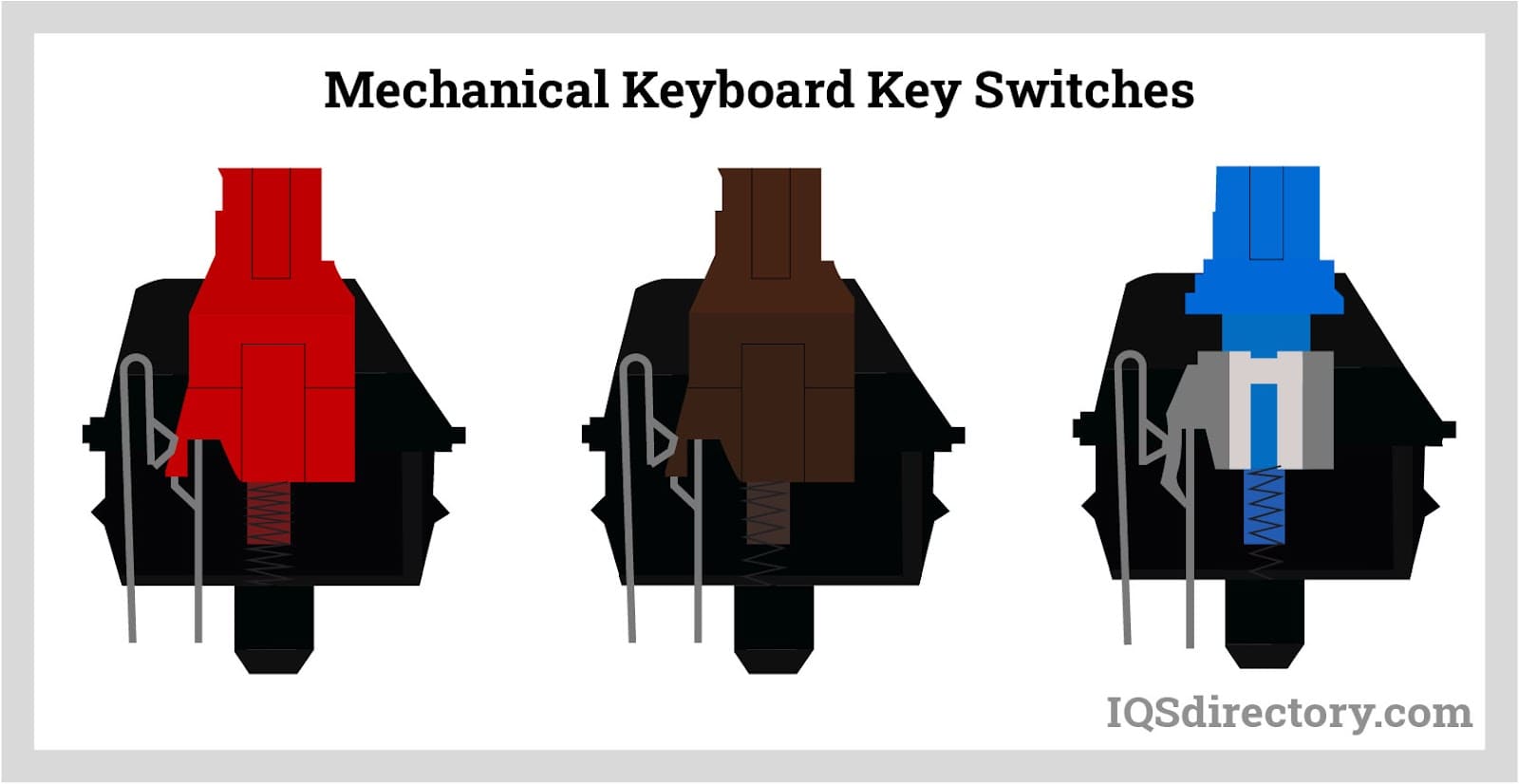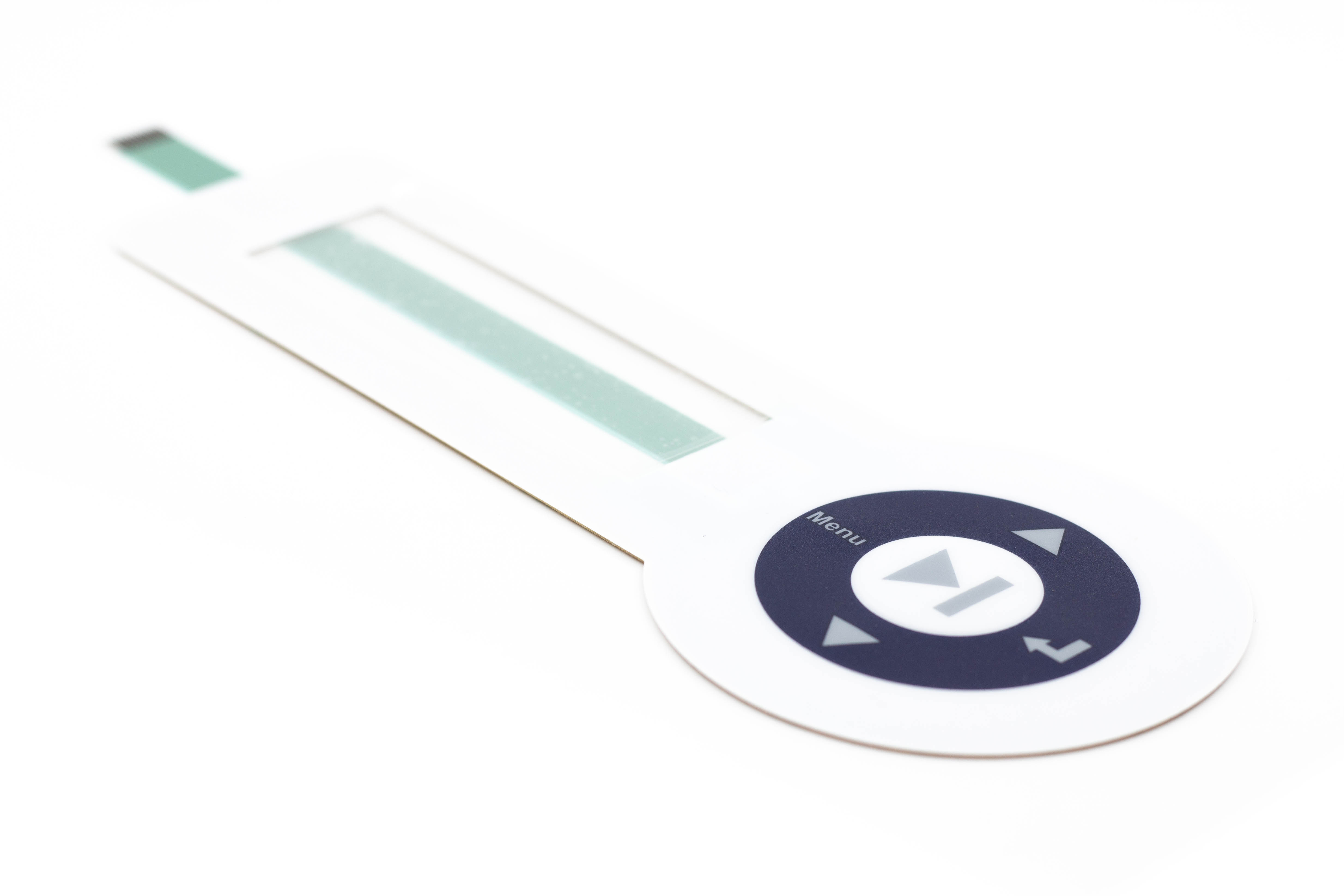Everything About Membrane layer Switch Over: A Comprehensive Guide for Beginners
Membrane layer switches are necessary elements in contemporary electronics, offering an one-of-a-kind interface for individual interaction - membrane switch. Their layered building and construction, consisting of overlays and conductive traces, provides capability and resilience. Unlike traditional mechanical buttons, membrane buttons offer a sleek layout and adjustable options. Comprehending their vital attributes and advantages can transform item style. Nonetheless, the ins and outs of their application and layout factors to consider warrant more exploration
What Is a Membrane Switch?
A membrane layer switch is a kind of electric button that is composed of a flexible membrane layer layered over a published circuit board. This layout enables a small and streamlined user interface, frequently used in numerous electronic devices. Membrane buttons are typically located in customer home appliances, medical equipment, and commercial machinery because of their sturdiness and resistance to ecological factors.The construction typically consists of several layers, such as visuals overlays and adhesive support, which supply tactile feedback and secure the wiring underneath. The procedure of a membrane layer switch is launched when pressure is related to the surface area, finishing an electric circuit.These buttons are valued for their flexibility, making it possible for custom layouts and printed graphics that provide to particular user interfaces. Their low-profile nature decreases room requirements, making them ideal for applications where conventional buttons may not fit. Generally, membrane switches provide a useful and aesthetic service for modern digital gadgets.
Trick Elements of Membrane Changes
Membrane layer changes consist of several vital parts that contribute to their capability and performance. The top layer, referred to as the overlay, provides the individual interface and is typically published with graphics or symbols. Beneath the overlay lies a spacer layer, which separates the conductive aspects and avoids unintended activation. The following vital component is the visuals layer, which enhances aesthetics and ensures the sturdiness of the design.Conductive traces, generally made from products like silver or carbon, are published on the circuit layer. When pressure is put on the overlay, these traces come right into contact, finishing the circuit. Furthermore, a support layer provides structural support and can be made from products such as polyester or polycarbonate. With each other, these parts develop a reliable, user-friendly user interface suitable for numerous applications, from household devices to industrial devices. Comprehending these aspects is vital for anyone thinking about membrane layer button innovation.
How Membrane Layer Changes Work
Understanding exactly how membrane switches feature is vital for valuing their prevalent usage in different tools. A membrane switch operates through a collection of layers, including a visuals overlay, spacer, and a circuit layer. When pressure is put on the overlay, it compresses the spacer layer, permitting the circuit layer to make call and complete an electric circuit. This activity sends out a signal to the gadget, motivating a response, such as transforming on a light or turning on a function.Membrane switches over can be created with numerous features, including tactile feedback, backlighting, and custom graphics, boosting individual interaction. Their building and construction permits a covered layout, shielding the internal parts from dirt, dampness, and contaminants. This sturdiness makes them suitable for varied applications, from customer electronic devices to industrial equipment. In general, the simpleness and effectiveness of membrane layer changes contribute to their appeal in contemporary technology.
Advantages of Membrane Switches Mechanical Switches
While mechanical buttons have long been a staple in lots of gadgets, membrane changes offer distinct benefits that make them significantly appealing. One significant advantage is their slim account, enabling more small layouts and better versatility in item development. In addition, membrane layer switches over attribute an uniform surface, which improves visual allure and simplifies cleansing, making them appropriate for environments where hygiene is critical.Another benefit is their resistance to dirt and dampness. Unlike mechanical switches, which can be jeopardized by environmental variables, membrane buttons supply a covered user interface that safeguards versus impurities - membrane switch. Membrane switches commonly have a longer life expectancy due to fewer moving components, resulting in enhanced longevity and reliability.Cost-effectiveness is additionally a significant advantage, as membrane switches can be created in mass with lower production prices. These aspects incorporate to place membrane layer switches as a useful option to typical mechanical alternatives in different applications
Common Applications of Membrane Layer Switches Over
Membrane switches are widely used in various markets, especially in customer electronics and commercial control panels. In consumer devices, they provide a streamlined, user-friendly user interface, while in commercial setups, they boost longevity and functionality. Comprehending these applications highlights the adaptability and functionality of membrane buttons in modern-day innovation.
Customer Electronic Devices Tools
As consumer electronics continue to develop, membrane layer buttons have become a popular selection for a selection of devices as a result of their flexibility and smooth style. These buttons are commonly discovered in smart devices, tablets, and remote controls, where room is limited and visual appeals matter. Their reduced account and adjustable layouts enable producers to produce my site user-friendly interfaces that improve the total user experience. In addition, membrane layer buttons are typically utilized in home appliances such as microwaves and coffee machine, providing instinctive control alternatives while withstanding wetness and dirt. The resilience and integrity of membrane layer switches make them suitable for day-to-day customer products, guaranteeing durability and constant performance. In general, their combination in consumer electronic devices mirrors a blend of capability and contemporary layout.
Industrial Control Panels
The applications of membrane changes expand past consumer electronics, discovering significant use in commercial control board. These buttons are preferred for their longevity and click here for more resistance to harsh atmospheres, making them ideal for making and process control settings. They offer a trusted interface for operators to manage machinery, screen procedures, and readjust setups. Membrane switches can be personalized to fit certain operational demands, integrating attributes like backlighting and responsive responses, improving user experience. Their inconspicuous layout permits for combination right into various equipment, while their ability to withstand spills, dust, and severe temperatures warranties long life. Overall, membrane layer switches add to risk-free and effective procedure in industrial applications, demonstrating their versatility and performance sought after atmospheres.
Considerations for Creating Membrane Layer Changes
When developing membrane layer switches, choosing the best products is important to assure longevity and capability. In addition, understanding layer setup strategies can greatly impact the switch's efficiency and user experience. These considerations play a vital function in producing efficient and trustworthy membrane layer button styles.
Material Selection Value
Material option plays an important duty in the layout and performance of membrane switches. The chosen products straight affect the button's toughness, responsive feedback, and overall aesthetic. Key considerations include the substrate, which must give structural stability while enabling flexibility, and the visuals overlay, which needs to be immune to use and environmental variables. Conductive materials must ensure reliable electrical efficiency, while adhesives need to use strong bonding without endangering the switch's procedure. Additionally, compatibility with producing processes and end-user atmospheres is essential; materials have to endure varying temperatures, moisture degrees, and chemical direct exposure. Eventually, appropriate material option not only improves the membrane layer button's efficiency however also adds to its long life and user satisfaction, making it a crucial aspect of the layout process.

Layer Arrangement Strategies

Frequently Asked Questions
How Much Time Do Membrane Changes Commonly Last?
Membrane switches normally have a lifespan of 1 to 5 million cycles, depending on usage and environmental conditions. Elements such as layout high quality and operating frequency substantially influence their look at more info durability and overall efficiency longevity.

Can Membrane Layer Changes Be Custom-made for Details Styles?
Membrane layer switches can undoubtedly be personalized to suit specific styles, enabling diverse forms, shades, and functionalities. This adaptability enables suppliers to customize these switches to fulfill one-of-a-kind aesthetic and operational requirements successfully.
What Materials Are Made Use Of in Membrane Layer Switch Over Construction?
Membrane buttons are usually constructed making use of materials such as polyester, polycarbonate, and sticky layers. These products offer sturdiness, adaptability, and resistance to ecological aspects, guaranteeing the buttons operate successfully in various applications and problems.
Are Membrane Layer Changes Immune or water resistant to Moisture?
Membrane buttons can be designed to be moisture-resistant, utilizing specialized coatings and materials. However, their water-proof capacities depend on building top quality and particular applications, making it essential to analyze requirements for suitable performance in various environments.
How Are Membrane Switches Repaired if Damaged?
Repairing damaged membrane layer switches over commonly includes changing the affected layer or circuit. Service technicians might likewise use conductive glue or make use of specialized repair service packages, making sure performance is recovered without full replacement of the entire switch setting up. Unlike typical mechanical buttons, membrane switches provide a streamlined layout and personalized options. A membrane layer button is a type of electrical switch that is composed of an adaptable membrane layer layered over a printed circuit board. The operation of a membrane layer button is initiated when pressure is used to the surface, completing an electric circuit.These buttons are valued for their flexibility, enabling personalized layouts and printed graphics that provide to certain customer interfaces. While mechanical buttons have actually long been a staple in lots of tools, membrane switches over deal unique benefits that make them increasingly appealing. Membrane layer buttons typically have a longer life-span due to fewer relocating components, resulting in boosted sturdiness and reliability.Cost-effectiveness is likewise a remarkable advantage, as membrane layer switches can be created in bulk with lower production prices.